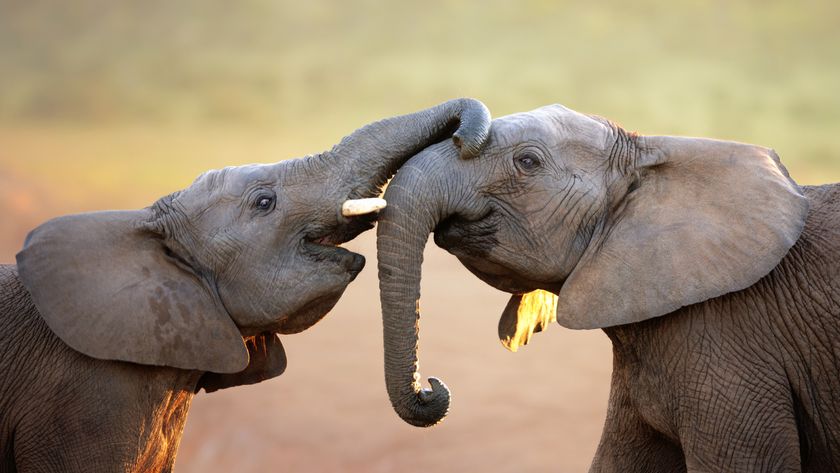Elephants Recover in African Park

Large mammals are recovering after years of decline in the Virunga National Park in the Democratic Republic of Congo, researchers said today.
Virunga is the most species-rich park in Africa. Civil war and poaching in recent years had reduced the elephant population from 4,300 in the 1960s to just 265 three years ago. In a new census, the population was up to 340.
The census also found 3,800 buffalo, up from 2,300 in 2003.
The survey was done by the U.S. Fish and Wildlife service and released today by the Wildlife Conservation Society (WCS) and the Institut Congolais pour la Conservation de la Nature (ICCN).
“The results of the census are encouraging, and proof that protecting the park’s wildlife can be done in the most turbulent conditions,” said WCS researcher Deo Kujirakwinja. “Poaching is still taking a toll on wildlife and the rate of recovery is being slowed as a result, but it is clear that the efforts of ICCN and its partners are finally leading to a reduction in the level of poaching.”
The preservation of animals has taken a human toll, however.
More than 100 park guards been killed since 1996 while trying to prevent poaching.
Sign up for the Live Science daily newsletter now
Get the world’s most fascinating discoveries delivered straight to your inbox.
- Top 10 Deadliest Animals
- Older Elephants Smell Sexier
- Climate Change, Not Humans, Killed Large Beasts
- Oops! Scientists Nudge Fish Closer to Extinction
- Five Deep-Sea Fish on Brink of Extinction












